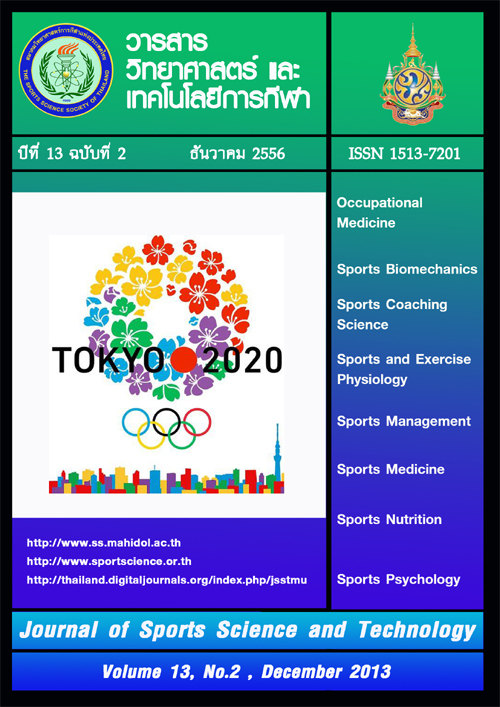ACUTE EFFECTS OF DIFFERENT PRESSURES USED IN HYPERBARIC OXYGEN CONDITIONS ON RECOVERY PROCESS AFTER INTENSIVE EXERCISE IN ATHLETES
Keywords:
hyperbaric oxygen/recoveryAbstract
This study aimed to find out the acute effects of hyperbaric oxygenation (HBO2), with different pressures, on recovery after high-intensity exercise. Male national Kabaddi athletes (n = 8, age 24 ± 2.7 yr, body weight 75 ± 5.9 kg, height 176 ± 5.5 cm) were recruited. Subjects were exposed to three randomized HBO2 conditions of 1, 1.3, 1.5 atmospheric pressure (ATA), at least 1 week apart, with a treatment duration of 45 min. Subjects performed 120 sec anaerobic tests (modified Wingate) pre and post HBO2 exposure. Blood pressure, blood lactate, and ratings of perceived exertion (RPE) were not significantly different between the three experimental trials. Immediate post-exercise heart rate after recovery at 1.5 ATA increased less than at 1.3 ATA (166.50 ± 2.38 and 176.25 ± 2.23 bpm) (p < 0.05). Peak power output (PPO): 215.63 ± 8.98 watt/kg and average power: 163.88 ± 4.49 watt/kg after HBO2 exposure was significantly higher than pre-exposure: 206.75 ± 10.08 watt/kg and 158.00 ± 3.64 watt/kg, respectively, at 1.5 ATA (45 min) p < 0.05. This is probably the result of the high concentration of oxygen in the circulatory system synthesizing energy reserves in the muscle. It was found that at 1.5 ATA, pressure, RPE values were lower than the 1 ATA and 1.3 ATA, but not significant (p > 0.05). The acute effect on short-term recovery, using oxygen under high pressure, produces higher peak and average power output than normal atmospheric pressure and is more effective at 1.5 ATA than 1.3 ATA.
(Journal of Sports Science and Technology 2013;13(2): 45 – 57 )






